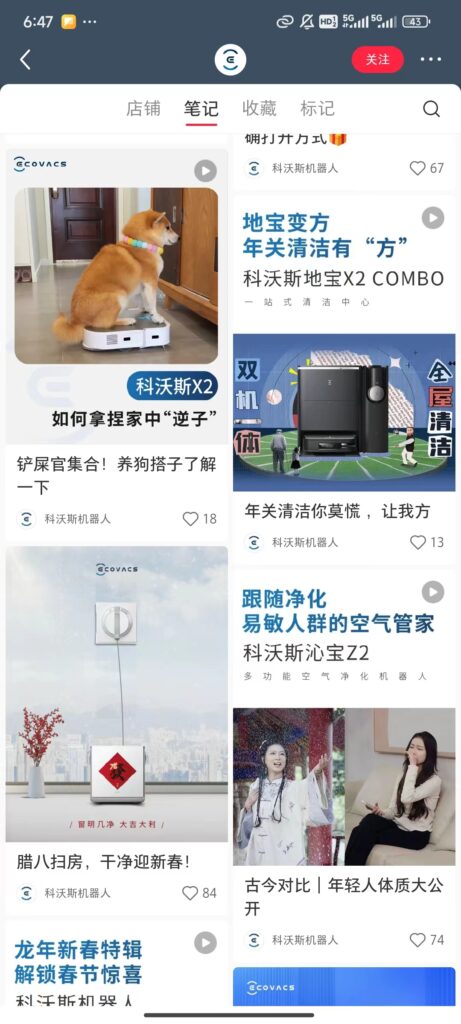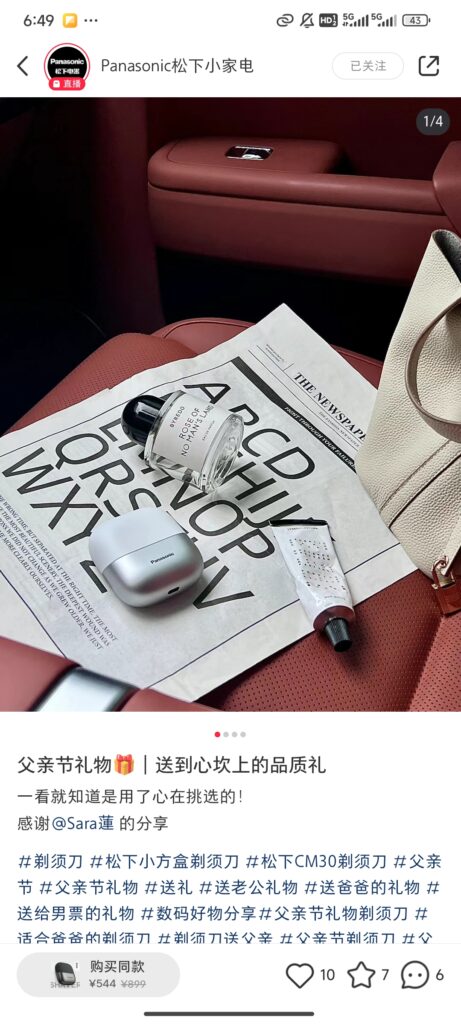As the world’s second largest economy and a key growth market, China presents a significant opportunity for overseas small household appliance brands looking to expand their global footprint. However, successfully navigating the complex Chinese consumer landscape requires a nuanced marketing strategy tailored to local preferences and behaviors. This article outlines a comprehensive approach to building a strong brand presence on Xiaohongshu (Red), China’s leading social e-commerce platform, in order to drive awareness, engagement, and sales among the country’s burgeoning middle-class consumers.

Brand Positioning and Objectives on Red
The first step is to establish a clear and compelling brand positioning that resonates with the target Chinese consumer. This involves articulating the brand’s unique story, core values, and distinctive product advantages. For example, an overseas small appliance brand might position itself as a purveyor of thoughtfully designed, technologically-advanced home solutions that elevate the everyday domestic experience.
After defining the brand’s essence, it’s critical to identify the target audience – such as young families, home decor enthusiasts, or tech-savvy consumers – and tailor the content strategy accordingly. Setting concrete operational goals, whether boosting brand awareness, increasing user engagement, or driving product sales, will provide a north star to guide the ongoing Red campaign.
Content Creation and Publishing
A balanced content mix that combines written articles and visually-engaging videos is key to capturing user attention on Red. Initially, a 70:30 or 60:40 text-to-video ratio is recommended, gradually shifting toward a video-centric approach as this format tends to be more compelling and interactive for users.
Regardless of format, content should maintain a cohesive brand identity and tone – blending informative, practical advice with an element of fun and personality. Written posts can spotlight the brand’s unique heritage and product USPs, while videos should prioritize high production values, smooth editing, and immersive audio to elevate the viewing experience.
Timing is also critical. Red users tend to be most active in the mornings around 9am, early to mid-afternoons from 11am-2pm, and evenings from 6-12pm on weekdays rather than weekends, when the platform sees less traffic from working professionals and students. Aiming for 2-4 new posts per week will keep the account fresh and engaging without overwhelming followers.
Monthly content planning that spans themed storylines and leverages trending hashtags (e.g. #HomeDecor, #SmartHome) can ensure continuity and discoverability. By aligning the brand’s narrative with popular subject matter, the content has a better chance of reaching a wider audience.
Community Building and User Engagement
Cultivating an active, loyal community is essential for long-term success on Red. Brands should prioritize prompt, friendly responses to user comments and direct messages, building rapport and demonstrating care for the audience. Encouraging followers to share their own product experiences can also catalyze organic word-of-mouth advocacy.
Regular interactive activities, such as home decor challenge contests or product testing opportunities, can further strengthen user engagement and brand affinity. Joining relevant discussion threads and industry-specific communities on the platform can also boost visibility and credibility.
KOL and KOC Collaborations
Partnering with key opinion leaders (KOLs) in the home, design, and lifestyle spaces can dramatically accelerate brand awareness and trust among Chinese consumers. Selecting KOLs whose personal styles and audience demographics align with the brand’s target market is crucial. Co-creating high-quality, authentic content that blends the KOL’s unique voice with the brand’s messaging can yield powerful results.
Beyond leveraging influential KOLs, cultivating a loyal base of key opinion consumers (KOCs) – faithful brand advocates who actively share their positive experiences – can serve as a powerful driver of organic reach and credibility. Incentivizing KOCs through exclusive access, rewards, or content creation opportunities can help the brand expand its sphere of influence.
ePR and Cross-Platform Integration on Red
Amplifying the brand’s story through earned media coverage is an effective way to elevate its profile and authority. Crafting compelling press releases, securing industry interviews, and collaborating with respected media outlets can help spread awareness beyond the Red ecosystem.
Integrating the brand’s Red activities with its presence on other major social platforms, such as Weibo and Douyin (TikTok), can create a cohesive, cross-channel marketing strategy. Synergizing content, campaigns, and data analysis across these channels can maximize the impact and efficiency of the overall digital strategy.
Data-Driven Optimization
Leveraging Red’s built-in analytics tools to monitor key performance indicators, such as impressions, likes, comments, and user behavior patterns, allows brands to continuously refine their content and engagement approach. Regularly reviewing these insights and making timely adjustments to publishing schedules, content themes, and KOL/KOC partnerships can steadily improve marketing effectiveness.
Success Stories for Inspiration on Red
Supor(ID: 苏泊尔SUPOR)
Supor has achieved great success in their social media marketing efforts. They have used cooking tutorials as their main content, cleverly integrating their own products into the video lessons to allow users to learn cooking techniques while also understanding the usage scenarios of the products. This content marketing strategy closely aligned with user needs has successfully attracted a large number of target users.
Additionally, Supor has also leveraged KOL (key opinion leader) collaborations and free trial activities to significantly increase brand exposure and user trust. They have invited influential cooking bloggers to collaborate, utilizing the fan resources of KOLs to expand their audience reach. At the same time, Supor has also strengthened user affinity for the brand through free trial campaigns, allowing more users to personally experience the products.

Ecovacs(ID:科沃斯机器人)
Ecovacs has also accumulated many successful experiences in social media marketing. They have used home decor as the cover image, attracting user visual attention, and cleverly integrated their own products into it to enhance the visual appeal. Meanwhile, Ecovacs has filmed videos showcasing their home service robots in multiple scenarios and expressed from the customer’s perspective how owning an Ecovacs robot can help solve household chores, resonating with users.

Panasonic(ID: Panasonic松下小家电)
Panasonic has succeeded in their social media marketing by exploring the brand’s history and differentiating selling points, while incorporating modern technology in their content. They have also leveraged celebrity endorsements and holiday campaigns to increase engagement and traffic.

Ultimately, the path to sustainable growth for overseas small appliance brands in China requires a holistic, data-informed strategy that balances creative storytelling, user-centric engagement, and cross-channel optimization. By establishing a strong, authentic presence on Red, brands can tap into the country’s burgeoning consumer class and build long-term brand loyalty.

